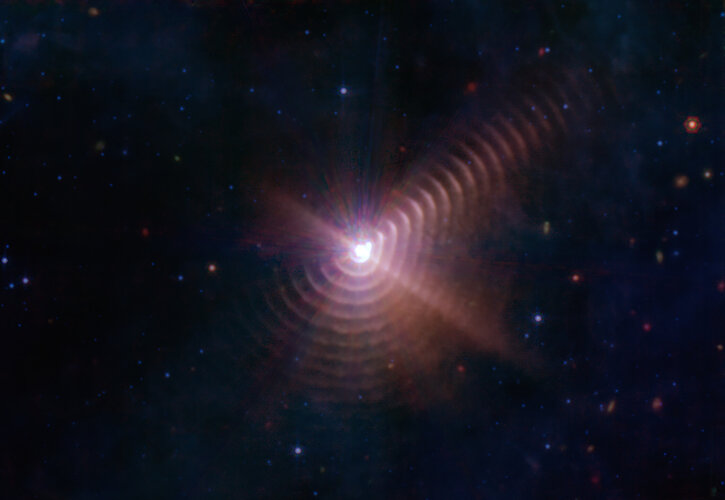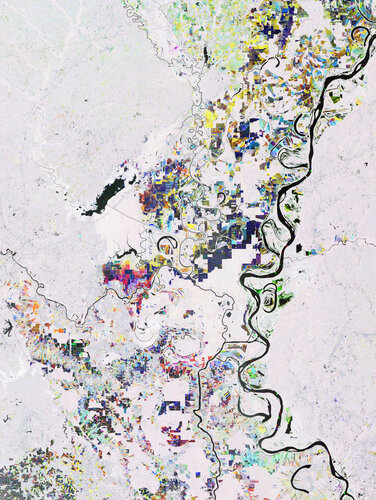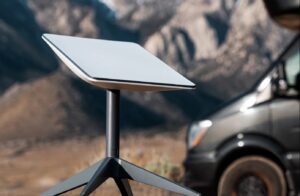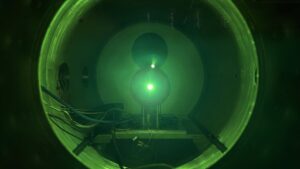Week in images: 10-14 October 2022
Friday, 14 October 2022 12:09
Week in images: 10-14 October 2022
Discover our week through the lens
Amazon's Project Kuiper will now launch with ULA rockets
Friday, 14 October 2022 11:03 Amazon announced on Wednesday that Project Kuiper will launch prototype satellites on the first flight of United Launch Alliance's (ULA) new Vulcan Centaur rocket in 2023.
The goal of Project Kuiper is to launch a series of 3,236 satellites into low earth orbit to provide broadband access to areas of the globe that lack high-speed internet.
"We couldn't be more excited to join th
Amazon announced on Wednesday that Project Kuiper will launch prototype satellites on the first flight of United Launch Alliance's (ULA) new Vulcan Centaur rocket in 2023.
The goal of Project Kuiper is to launch a series of 3,236 satellites into low earth orbit to provide broadband access to areas of the globe that lack high-speed internet.
"We couldn't be more excited to join th Broccoli gas: A better way to find life in space
Friday, 14 October 2022 11:03 Broccoli, along with many other plants and microorganisms, emit gases to help them expel toxins. Scientists believe these gases could provide compelling evidence of life on other planets.
These types of gases are made when organisms add a carbon and three hydrogen atoms to an undesirable chemical element. This process, called methylation, can turn potential toxins into gases that float saf
Broccoli, along with many other plants and microorganisms, emit gases to help them expel toxins. Scientists believe these gases could provide compelling evidence of life on other planets.
These types of gases are made when organisms add a carbon and three hydrogen atoms to an undesirable chemical element. This process, called methylation, can turn potential toxins into gases that float saf NASA, USGS map minerals to understand Earth makeup, climate change
Friday, 14 October 2022 11:03 NASA and the U.S. Geological Survey (USGS) will map portions of the southwest United States for critical minerals using advanced airborne imaging. Hyperspectral data from hundreds of wavelengths of reflected light can provide new information about Earth's surface and atmosphere to help scientists understand Earth's geology and biology, as well as the effects of climate change.
The resear
NASA and the U.S. Geological Survey (USGS) will map portions of the southwest United States for critical minerals using advanced airborne imaging. Hyperspectral data from hundreds of wavelengths of reflected light can provide new information about Earth's surface and atmosphere to help scientists understand Earth's geology and biology, as well as the effects of climate change.
The resear NASA's solid-state battery research exceeds initial goals, draws interest
Friday, 14 October 2022 11:03 NASA researchers are making progress with developing an innovative battery pack that is lighter, safer, and performs better than batteries commonly used in vehicles and large electronics today.
Their work - part of NASA's commitment to sustainable aviation - seeks to improve battery technology through investigating the use of solid-state batteries for aviation applications such as electric
NASA researchers are making progress with developing an innovative battery pack that is lighter, safer, and performs better than batteries commonly used in vehicles and large electronics today.
Their work - part of NASA's commitment to sustainable aviation - seeks to improve battery technology through investigating the use of solid-state batteries for aviation applications such as electric Esri partners with Digital Earth Africa to support sustainable growth
Friday, 14 October 2022 11:03 Climate change is compounding risks of food insecurity, displacement, and natural disasters across broad regions of the African continent, with vulnerable populations facing especially grave outcomes. However, several countries in Africa are already innovating and driving the next big tech sector boom, with companies creating solutions to close social and economic gaps. To support local organiza
Climate change is compounding risks of food insecurity, displacement, and natural disasters across broad regions of the African continent, with vulnerable populations facing especially grave outcomes. However, several countries in Africa are already innovating and driving the next big tech sector boom, with companies creating solutions to close social and economic gaps. To support local organiza Optical foundations illuminated by quantum light
Friday, 14 October 2022 11:03 Optics, the study of light, is one of the oldest fields in physics and has never ceased to surprise researchers. Although the classical description of light as a wave phenomenon is rarely questioned, the physical origins of some optical effects are. A team of researchers at Tampere University have brought the discussion on one fundamental wave effect, i.e., the debate around the anomalous behavi
Optics, the study of light, is one of the oldest fields in physics and has never ceased to surprise researchers. Although the classical description of light as a wave phenomenon is rarely questioned, the physical origins of some optical effects are. A team of researchers at Tampere University have brought the discussion on one fundamental wave effect, i.e., the debate around the anomalous behavi Commercial space station developers seek clarity on regulations
Friday, 14 October 2022 11:01
Companies working on commercial space stations intended to succeed the International Space Station say they need more clarity from the federal government on who will regulate them and how.
The post Commercial space station developers seek clarity on regulations appeared first on SpaceNews.
Earth from Space: Mississippi River
Friday, 14 October 2022 07:00
Mississippi River, one of the longest rivers in North America, is featured in this multi-temporal radar image captured by the Copernicus Sentinel-1 mission.
Seeing how a spacecraft dies
Friday, 14 October 2022 06:29
Seeing how a spacecraft dies
Astra’s strategy to address NASDAQ warning
Thursday, 13 October 2022 20:35
MOUNTAIN VIEW, Calif. – While Astra Space is taking the delisting warning the company received from NASDAQ seriously, the company has “lots of different strategies” to address it, Astra CEO Chris Kemp said at the Satellite Innovation conference here.
NASA's Lucy spacecraft prepares to swing by Earth
Thursday, 13 October 2022 20:07
On Oct. 16, at 7:04 a.m. EDT, NASA's Lucy spacecraft, the first mission to the Jupiter Trojan asteroids, will skim the Earth's atmosphere, passing a mere 220 miles (350 kilometers) above the surface. By swinging past Earth on the first anniversary of its launch, Lucy will gain some of the orbital energy it needs to travel to this never-before-visited population of asteroids.
The Trojan asteroids are trapped in orbits around the sun at the same distance as Jupiter, either far ahead of or behind the giant planet. Lucy is currently one year into a twelve-year voyage. This gravity assist will place Lucy on a new trajectory for a two-year orbit, at which time it will return to Earth for a second gravity assist. This second assist will give Lucy the energy it needs to cross the main asteroid belt, where it will observe asteroid Donaldjohanson, and then travel into the leading Trojan asteroid swarm.
Starlink kicks off Asia expansion in search of more subscribers
Thursday, 13 October 2022 19:59
Starlink is deepening its foothold in Japan as SpaceX’s satellite broadband service looks to expand elsewhere in Asia, which will be critical for generating much-needed revenues.
The post Starlink kicks off Asia expansion in search of more subscribers appeared first on SpaceNews.
Starlink’s market dominance affecting DoD’s hybrid network plans
Thursday, 13 October 2022 19:50
As SpaceX’s Starlink continues to gain military customers, the Pentagon worries that the company’s use of proprietary technology will make it difficult to integrate into a hybrid architecture that DoD hopes to build
Phase Four adopts iodine for next-gen Max-V engine
Thursday, 13 October 2022 17:34
Propulsion startup Phase Four is expanding its Maxwell plasma propulsion line by offering Max-V, an iodine-fueled engine.
The post Phase Four adopts iodine for next-gen Max-V engine appeared first on SpaceNews.

